Introduction
In the category of mass media, designated as hardware, we usually include those machines-like appliances and equipment which are considered to be technical in terms of their composition and working. These are designed and operated on sound scientific principles and technical knowledge. Since the material used in their body is relatively a hard material and their operation and working is technical and complex, these equipment and appliances are designated with the adjective hard, and this is why we call them as 'hardware' in contrast to other teaching aid materials named as 'software'. Such teaching-learning aid material, designated as hardware, may include the following appliances or equipment.
Magic Lantern
Magic lantern is the ancient most hardware used, as an instructional aid, for the projection of pictures from a transparency (slide) on a wall or screen. For making its use a transparent slide of a small figure is first prepared and then placed into a part of the magic lantern called the slide carrier. The magic lantern device projects its larger and sharper image on the screen for the clear viewing.

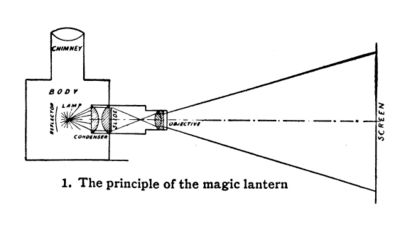
Epidiascope
Epidiascope is an advanced magic lantern, as it can project opaque objects also, in addition to the transparent slides.
Use of Epidiascope in Teaching-Learning:
Epidiascope can play an important role in teaching and learning of various school subjects in the following manner:
- Various slides related to the subject material can be easily shown by projecting on the screen in their enlarged forms with the help of this device. Thus, if the figure or illustration is very small and it is required that the whole class should see it clearly; a transparent slide of this small figure can be prepared by the subject teacher with the involvement of his students. Since slides can also be available from the market or borrowed from the relevant sources, a teacher may not feel handicapped and thus may resort to their proper use by obtaining from them the concerned sources.
- The major advantage of epidiascope lies in its ability to directly project the non-transparent or opaque objects available in their real form on the screen in their enlarged size consequently, various types of useful material related to teaching contents may be successfully presented for the proper view of the entire class. Such material may include:
- Graphic and pictorial materials like pictures, charts, maps, diagrams, timelines, cartoons, posters, graphs, etc.
- All types of printed material.
- Handwritten material, drawing and sketches.
- Stamps, coins, stone materials, remain of historical or cultural interests, fossils, bones, etc.
- Specimen of living and nonliving objects.
- Models, dioramas, pieces of arts, figures, etc.
- The use of epidiascope may have another extra advantage on account of its capacity to help in the preparation of graphic aids like pictures, charts, maps, diagrams, graphs, timelines, etc. For such purpose, the illustrated material like pictures or maps given in the book , magazine, and other sources may be directly put on the platform of the epidiascope to be projected on the sheet of an a paper clamped on the screen and then the necessary drawings or sketches may be drawn with the help of colored pencils.

Figure 1 Optical diagram of a simple epidiascope in two modes of operation [for the sake of simplicity, only one light source—an incandescent lamp (2) —is shown]: (a) episcopic projection, (b) diascopic projection. In the episcopic-projection mode, beams from the light source (2) are directed onto an opaque object (6) in the light-shielded housing (1) by means of spherical mirrors (3) and (5). Some of the beams diffusely scattered by the object are reflected by a mirror (4) through a high-transmission lens (7). The fan (11) represents the projector’s cooling system. In the diascopic-projection mode, the mirror (5) is tilted so that beams from the light source (2) can enter a condenser (8). Uniformly Illuminating a diapositive that has been inserted into a holder (9), the condenser directs the beams into a lens (10), which projects an image onto a screen.
Projectors
Projectors, as an effective projective equipment, occupy a prominent place in the instructions of various subjects of the school curriculum. In our classrooms, we generally make use of the following three types of projectors:
1. Slide cum filmstrip projector
2. Overhead projector
3. Opaque projector
Slide cum Filmstrip Projector can be utilized for the projection of slides as well as filmstrip.
The basic design of a slide-cum-filmstrip projector is the same as that the lantern slide projector. The variation lies in:
- the mechanism for channelizing and moving the filmstrip through the projector,
- nearness of projection lens to the aperture in comparison to that of the lantern slide projector, and
- provision of a cooling fan for protecting the filmstrip or slides from over heating.
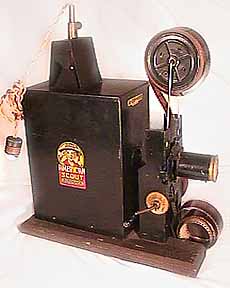
Overhead projector, usually need in our school classrooms, can project transparency carrying printed and handwritten material material and/or graphics.

Advantages of overhead projector:
This equipment as compared to epidiascope and slide cum film projector proves to be more valuable in the task of teaching and learning of all the subjects of the school curriculum, as may be revealed through the following discussion:
- Since the image in this projector is projected over the shoulder of the teacher, he faces the classes in usual way at all the times. With the class in full view, it s possible him to observe the reactions of the student s, adjust his responses and action accordingly, and exercise the desirable control over the teaching learning situations.
- The optical system of this type of projector permits placing the projector close to the screen and blackboard. Therefore, the teacher can place it even on his table lying in front of the blackboard. He can teach in a usual manner by facing his class and, at the same time, he is capable of operating the machine. There is no need of separate projector operator or the accompanying instructor for the teacher to assist him.
- Since a high power electric bulb (750 Watt or 1000 Watt) is used in the projection lamp and not much light is wasted in the projection operation, there is no need of darkening the room for the appropriate visibility of the image on the screen. Consequently, the problems regarding the arrangement for proper variation and cooling of the rooms don’t arise.
- The aperture of this projector is comparatively large. Consequently, it may allow the use of large slides of the size 25×25 cm or 20×20 cm. the large size of the slides may further facilitate the preparation of artwork for slides.
- Since the slides in this projector are placed on the top of the glass aperture, there is no difficulty in changing the slides. Moreover, the teacher may also see the slides exactly as the students do and thus is able to integrate his comment and teaching with what is being projected on the screen.
- The main advantage of this projector is that the projection screen can be very well utilized by the teacher as a blackboard. He can write or draw at will on the slide or cellophane sheet stretched over the platform with a marking pencil while the object is being projected, without turning away from the class. These marks can be removed afterwards from the slide or the sheet by wiping them a clean cloth.
- Usually, the teacher has to go nearer to the blackboard for explaining the things written or sketched on it. However, while making use of this equipment, he doesn’t have to move from machine to the wall to explain things to the students. He can use a pointer or pencil to point out important details of a slide.
- The projection platform carrying slides can also be used to display a variety of platform for this purpose. Very useful and relevant drawing and sketches can be drawn on this sheet and the same may be properly projected on the screen. Consequently, the practical knowledge regarding the process of election work of the assembly or parliament in session, the organizational structure of an institutions or a factory, and demonstration work concerning map diving can be properly shown on the screen. Not only the graphics, but also the liquid material can be made visible on the screen by placing a transparent disc containing the liquid material on the projection platform.
- The operational task of this projector also doesn’t involve any difficulty. It simply requires turning of the power switch, placing the slide on the projection platform and focusing the image on the screen.
The slide-cum-filmstrip projector and overhead projector can be used to project the transparent material. The opaque material, like picture, diagram and specimen can’t be projected by these projectors. The third type of projectors, namely opaque projectors do away with this difficulty. It can be utilized to protect and display all types of objects. It can be utilized to project and display all types of objects, whether transparent or opaque, on the screen and hence, it proves to be more useful and effective in comparison to other types of projectors.
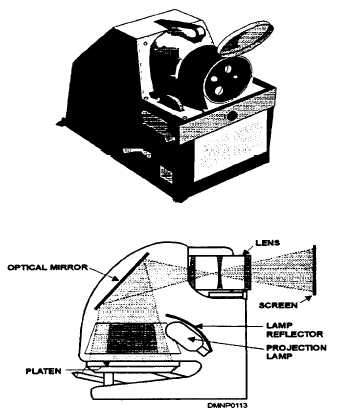
The use of the opaque projector may prove quite helpful for the teachers and students on account of the simplicity and unique characteristics of the projection task carried out through this projector. An unlimited supply of transparent and non-transparent materials easily available for projection, and the scope of its easy projection in a quite enlarged form on the screen make this equipment a valuable aid in the teaching and learning of almost all the subjects of the school curriculum. The main drawback related to the need of having complete darkness may be handled through suitable remedial measures. However, the recent development in the area of opaque projection have introduced such equipment which can operate in a semi-darkened and lighted room and, therefore, by using these new equipments this drawback can also be removed.
Radio is the most significant medium for education. As a supplement to classroom teaching its possibilities are almost unlimited. Its teaching possibilities are not confined to the five or six hours of the school day. It is available from early morning till long after midnight. By utilizing the rich educational and cultural offerings of the radio, children and adults in communities, however remote, have access to the best of the world’s stores of knowledge and art. Some day its use as an educational instrument will be as common place as textbooks and blackboards.
These broadcasts are of two types:
- General broadcast providing general information about the events and happenings, assimilating knowledge about the world, culture and life.
- Educational broadcast specifically prepared and broadcast for serving the cause of education and classroom in the form of radio lesson, lectures, etc.
Advantages:
The educational advantages of radio broadcasting may be summarized as follows:
- Radio broadcasting makes it possible to listen to the lectures, talks, discussions and seminar proceedings of educational interest in which renowned authors, educationalist, leading scholars and other important personalities may participate. Such contact is bound to provide immense educational and psychological value to the students.
- Radio broadcasting, through its planned and sequenced classroom lessons on various topics related to school subjects, may provide much assistance to the classroom teacher in realizing the instructional objectives.
- Radio broadcasting has a potentiality of becoming a potent source of education as these are capable of integrating education with the real life experience on one hand and healthy entertainment and source of pleasure on the other. The students can be easily motivated to listen to the radio talks and thus derive the desired educational benefits.
- As a mass media, radio broadcasting proves a highly economical source of education instructions. Its advantage may reach uniformly to millions of its listeners by breaking distance and time barriers. The cost per capita of listeners in educational broadcasting service is most negligible.
- Radio broadcasting is capable of solving various problems in the field of education arising out of the shortage of man-material resources. There is a shortage of good textbooks, well-planned instruction programmes, suitable instructional devices and aids and competent teachers. The learner population is increasing day by day. The courses of instruction are widening. It is not possible to provide the benefits of education to such a larger number of learners with the desired efficiency without the aid of an effective medium like radio broadcasting.

Tape Recorder
It is an effective recording device that calls for the use of auditory senses to convey educational message to the learners. It mainly consists of three parts--microphone or over sound outputs, the amplifier, and the reproducer. It involves two main processes, viz. recording and reproducing of the sound.
- In recording, the educational message is first fed into the tape recorder through microphone and other inputs. The voice produces mechanical vibrations that are changed into electrical vibrations. The amplifier intensifies these vibrations that in turn activate a magnet. It results in the establishment of varied sound pattern on the iron oxide coated tape.
- The playing of the instrument results into the reproduction of the recording sound. Here the sound patterns contained on the tape are subjected to electrical vibrations that are amplified by the amplifier and changed into an original like voice by the speaker.
The tape recorder may serve the following useful educational purposes:
- It is quite helpful in the learning of some special subjects like music, dramatics and language.
- It helps in overcoming poor speech habits and correcting speech habits.
- It helps in the development of conversation skill, expression power and the techniques of effective dramatization.
- On account of its recording service, it may work as an effective aid for the evaluation of teaching-learning programme.
- It may help in the organization, conduct and evaluation of the various co-curricular activities of the instruction.
- It may help in preparing recorded educational programmes to be used for the instructional purposes.
- It may supplement the educational outputs of the radio and television broadcasts and the invited guest lecturers.
- It may render valuable help in preparing commentary for the display of filmstrips and slides.
- It may be used in recording the working of the various seminars, workshops and conferences organized into institutions.
- It may help in behavior modification task and encoding the classroom events.
- It may help a teacher for the assessment of his own behavior and teaching task.
Television (TV)
Television is a powerful medium of communication that calls for the use of auditory as well as visual sense of the learners in receiving education. From a large distance, this appliance make us able to transmit instantly every spoken or written word, the picture, the sights and sounds and the action of events as they take place.
How to Use Television in the Teaching-Learning
The operation of a television set is very simple as it has now been a routine household affair. For the utilization of its services in the school instructional programme, a teacher should be very cautious at each stage. The stages are described as follows:
The preparation stage:
- The teacher should make himself acquainted with the broadcasting programmes or schedules beforehand by securing all related printing materials of the broadcasting stations.
- The teacher should make himself prepared for getting the maximum benefit from TV broadcasts for the instructional purposes.
- He should get his students prepared educationally as well as psychologically for receiving education for the TV broadcast. He should gld guide the students' thinking by telling them exactly how they can be benefited and what important points they should observe and remember.
- The adequacy of the physical environment and learning situations must be properly ensured before showing a TV programme. For this purpose, the following points are to be remembered:
- Ensure the appropriate working of the TV set.
- Determine the number of students to be accommodated on the basis of the type of telecast, size of the screen, and size and shape of the classroom.
- Try to have adequate arrangements for lighting, ventilation and seating.
- Do not allow anyone to sit within the distance of 10 times the width of the TV screen (distance taken from the screen).
The presentation stage
- The teacher must operate the TV set as adequately as possible for obtaining maximum clarity of the vision and the sound.
- Proper discipline and learning environment to be maintained throughout the telecast programme.
- The students should be made to take notes or sketches (preferably in brief outlines to avoid missing other important parts of the telecast).
- The students should be asked to compare the deficiency of their notes or sketches immediately after the telecast.
The follow-up stage
- There should be a lively discussion over the subject of the telecast under the leadership of the teacher.
- Each student should be given an opportunity to clear up his doubts and fill up the missing links.
- The students should be guided and given opportunity for seeking practical application of things seen by them in the telecast programme.
- There should be an adequate arrangement for the assessment of the students' understanding of the televised subject through some test-oral or written.
- The students' weakness or errors diagnosed by the test should be corrected immediately through group handling or individualized instruction.
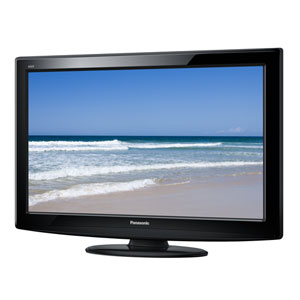
Closed-circuit television (CCTV), also known as video surveillance, is the use of video cameras to transmit a signal to a specific place, on a limited set of monitors. It differs from broadcast television in that the signal is not openly transmitted, though it may employ point to point (P2P), point to multipoint, or mesh wireless links. Though almost all video cameras fit this definition, the term is most often applied to those used for surveillance in areas that may need monitoring such as banks, casinos, airports, military installations, and convenience stores. Videotelephony is seldom called "CCTV" but the use of video in distance education, where it is an important tool, is often so called.
(https://en.wikipedia.org/wiki/Closed-circuit_television)
The system is a closed circuit television can bring wonders in arranging properly organized and sequential educational programmes and learning experiences to a particular group of learners on the local level in a limited region. In contrast to the conventional open system of telecasting, a closed circuit television system provides a free hand to its users in the matter of production, relay and reception of the educational programmes very much in tune with their specific teaching-learning needs at a local level in a specific region.
What specific advantages may drawn through the services of CCTV can be briefly summarized as follows:
- The use of CCTV can help in extending the range of the classroom activities from a single room to many adjacent rooms of a school or schools situated in the neighbourhood, and covered through the cables.
- The use of CCTV also helps a number of viewers at a time to view the exhibits, demonstration and other essential practical activities which are normally difficult to get in the usual classroom situation as effectively as needed for the desired instructional outcomes.
- The use of CCTV provides a proper platform for having the desired exchange of man-material resources, learning and instructional activities, and courses and events not only among the students and staff of the same institution but also between the various institutions linked with the circuit of CCTV.
- The use of CCTV may prove quite beneficial in making the students learn and master the art and techniques of many skills with precision and accuracy.
- The use of CCTV may help an institution or group in institutions to devise a system of televised instruction in accordance with the learning and instructional needs of their students on one hand and the schedules and the available man-material resources with them on the other.
- Besides helping the teacher and students in their tasks in the school set-up, the use of CCTV may also prove quite beneficial in providing education and teaching facilities to the would be teachers and in-service teachers in the following manner:
- It can provide valuable help in presenting model lessons on the teaching subjects, practical demonstrations for the work experience facilities, and other training schedules to the pupil, teacher educators and other subject experts, and this can be done simultaneously to the many groups/sections of a training college or a number of colleges.
- It can prove a boon for the micro teaching as well as macro teaching sessions of the training colleges.
- It can help teachers training colleges to improve their programmes and practices by getting opportunities to pool their own men and material resources for the benefit of all trainees on their role at one time through the services of CCTV.
- The use of CCTV can help the teacher educators and administrators including the principal to have a close watch on the activities and programmes going inside the cable network of CCTV.
The videocassette recorder, VCR, or video recorder is an electromechanical device that records analog audio and analog video from broadcast television or other source on a removable, magnetic tape videocassette, and can play back the recording. Use of a VCR to record a television program to play back at a more convenient time is commonly referred to as timeshifting. VCRs can also play back prerecorded tapes. In the 1980s and 1990s, until the VCR was superseded by the DVD player and PVR, prerecorded videotapes were widely available for purchase and rental, and blank tapes were sold to make recordings.
Most domestic VCRs are equipped with a television broadcast receiver (tuner) for TV reception, and a programmable clock (timer) for unattended recording of a television channel from a start time to an end time specified by the user. These features began as simple mechanical counter-based single-event timers, but were later replaced by more flexible multiple-event digital clock timers. In later models the multiple timer events could be programmed through a menu interface displayed on the playback TV screen ("on-screen display" or OSD). This feature allowed several programs to be recorded at different times without further user intervention, and became a major selling point.
A film, also called a movie or motion picture, is a series of still images which, when shown on a screen, creates the illusion of moving images due to the phi phenomenon. This optical illusion causes the audience to perceive continuous motion between separate objects viewed rapidly in succession. A film is created by photographing actual scenes with a motion picture camera; by photographing drawings or miniature models using traditional animation techniques; by means of CGI and computer animation; or by a combination of some or all of these techniques and other visual effects. The word "cinema" is often used to refer to the industry of films and filmmaking or to the art of filmmaking itself. The contemporary definition of cinema is the art of simulating experiences to communicate ideas, stories, perceptions, feelings, beauty or atmosphere by the means of recorded or programmed moving images along with other sensory stimulations.
The process of filmmaking is both an art and an industry. Films were originally recorded onto plastic film which was shown through a movie projector onto a large screen (in other words, an analog recording process). The adoption of CGI-based special effects led to the use of digital intermediates. Most contemporary films are now fully digital through the entire process of production, distribution, and exhibition from start to finish. Films recorded in analog form traditionally included an optical soundtrack, which is a graphic recording of the spoken words, music and other sounds that are to accompany the images. It runs along a portion of the film exclusively reserved for it and is not projected.
(https://en.wikipedia.org/wiki/Film)
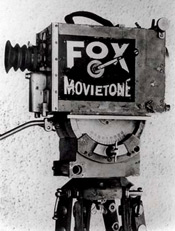
Computers as an aid to the instructional process are the latest arrival in the field of education. In terms of technological advancement and educational utility, they have surpassed all the audio-visual aid material and equipment. Their demand is increasing day by day in serving various purposes and fields of education. The day is not far away when every educational institution and each classroom will be equipped with some computer sets and every child will have the facilities of personal computer, laptop or a notebook.
The components of a usual computer system are as follows:
- Input unit
- Central Processing Unit (CPU)
- Output unit

Use of Computers
Computers as an instructional aid can serve the following purposes in the teaching and learning of the school subjects:
- Storehouse of knowledge and information
- Providing a good source of self-instruction to the students
- Providing education through stimulation and gaming
- Helping the teachers in their teaching and professional growth
- Best substitute of the traditional teaching aids
- Helping teachers in various other tasks related to teaching-learning
REFERENCES
- Ahluwalia, S. L., Audio Visual Hand Book, Delhi: NCERT, 1967.
- Brown, James, M. Richard B. Lewis and Feed F. Harcleroad, A.V. Instructional Material and Methods, New York: McGraw-Hill, 1959.
- Chakrabarti, S.K., Audio Visual Education in India, New Delhi: Oxford IBH, 1962
- Chaudhry, K.P., Audio Visual Aids in Teaching of Indian History, Delhi: Atma Ram & Sons, 1962.
- Dale Edgar, Audio Visual Methods in Teaching (Rev. ed.), New York: Holt, Rinehart and Winston, 1961.
- Fifth, Brain, Mass Media in Class Room, London: Macmillan, 1968.
- Hass, K.B. and H.Q. Parker, Preparation and Use of Audio-Visual Aids, New Delhi: Prentice Hall of India, 1964.
- Hoban, Charles F. and Edward B. Ormer, Instructional Film Research, Quoted in, Fred John Pula, Application and Operation of Audio-Visual Equipment in Education, London: John Wiley & Sons, 1968.
- Kieffer, Q.E. and L.W. Cochran, Manual and Audio-Visual Aids, New Delhi: Prentice Hall of India, 1964.
- Kinder, James S., Audio Visual Materials and Techniques, (2nd ed.), New York: American Book Co. 1959.
- Raynolds, R.G. quoted in C.L. Bhalla, Audio-Visual Aids in Education, p. 91, Delhi: Atma Ram & Sons, 1953.
- Wittich, Walter A. and Charles, F. Schuller, Audio-Visual Materials: Their Nature and Use, (2nd ed.) New York: Harper & Brothers, 1962.
- Wyman, Raymond, Audio-Visual Devices and Techniques, Amherest: University of Massachusetts, 1957.
- Pula, Fred John, Application and Operation of Audio-Visual Equipment in Education, London: John Wiley & Sons, 1968.
07/09/2015
Francisco, Izah
BSED III-A
UPHSD-LP



No comments:
Post a Comment